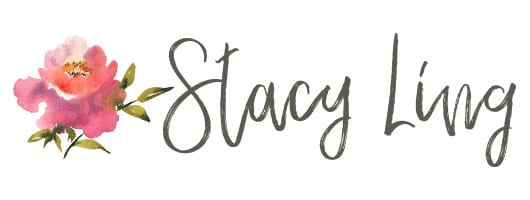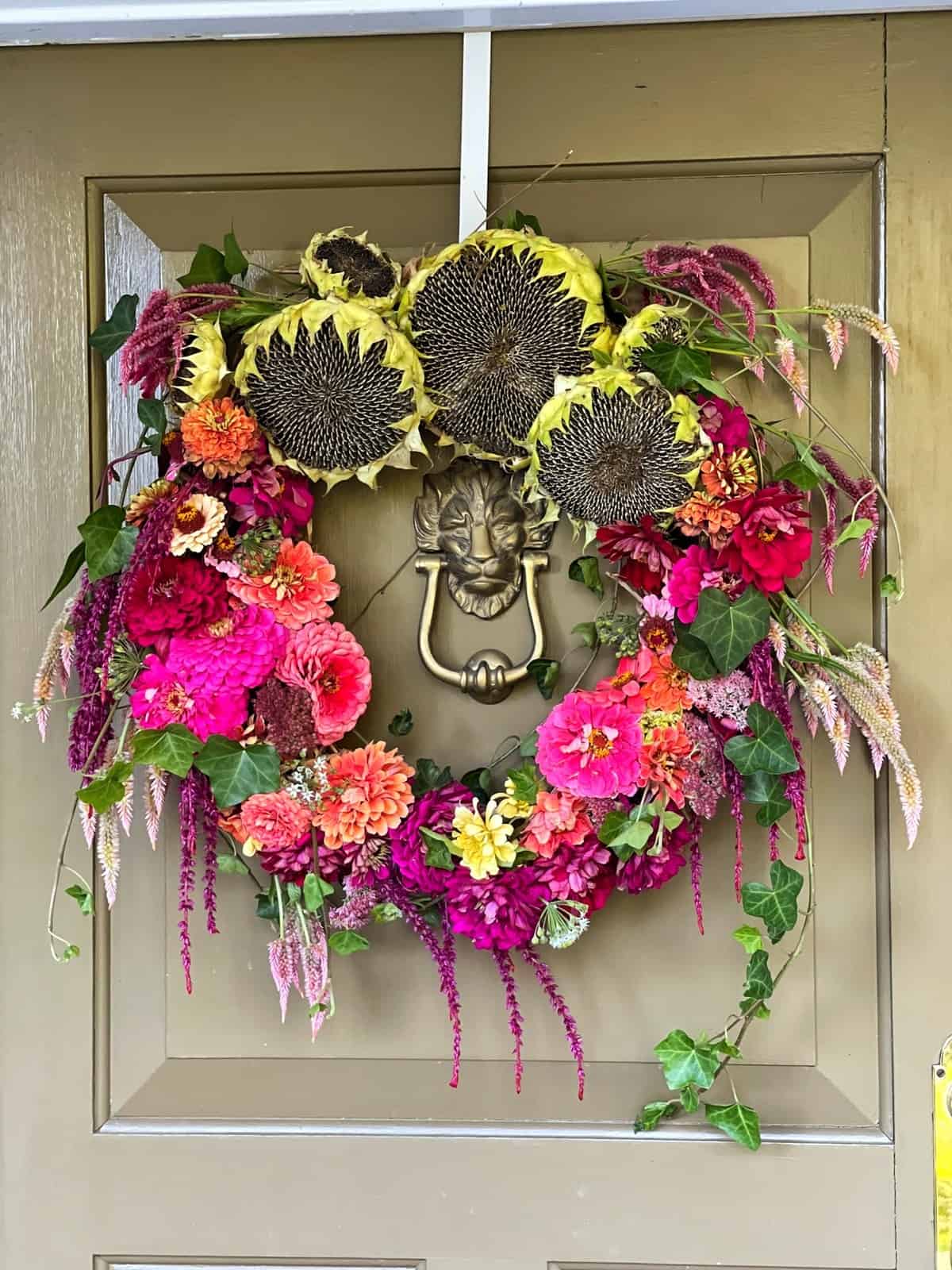Craft a stunning hydrangea wreath for free with this easy DIY tutorial. Learn how to use materials you already have to create a beautiful seasonal decoration.
Isn’t it amazing how the simplest things can bring the most joy? A gorgeous hydrangea wreath is the epitome of summer/fall charm, and you can create one yourself without spending a dime!
Imagine transforming those old, forgotten wreaths you’ve been hoarding into stunning seasonal decor. It’s easier than you think, and the results are simply breathtaking.
This easy DIY project breathes new life into those neglected wreath forms while showcasing the beauty of hydrangeas from your garden (or a friend’s). And the best part? It won’t cost you a penny!
(Posts on stacyling.com may contain affiliate links. Click HERE for full disclosure.)
Why Make Your Own Hydrangea Wreath DIY?
Crafting your own hydrangea wreath offers numerous benefits:
- Customization: Tailor the design to your personal style and home decor.
- Creativity: Express your artistic flair with unique arrangements and embellishments.
- Cost-Effective: Utilize materials you already have for a budget-friendly project.
- Personal Touch: Create a wreath that reflects your individuality and adds warmth to your home.
- Connection with Nature: Enjoy the process of foraging for natural materials.

Timing is Key: When to Harvest Your Hydrangeas
For the best results, harvest your hydrangeas when the blooms have developed a “vintage” look and feel slightly papery to the touch. This usually happens later in the season, towards the end of summer or early fall. If you cut them too early when they are still fresh, they won’t dry as well on the wreath and will likely wilt.

Materials You’ll Need
You’ll be surprised at how few supplies you need for this craft.
- pruners or scissors
- bucket or other container to collect the blooms
- An old grapevine wreath or other wreath form. Repurpose one you have on hand!
- Late summer/Early fall hydrangea flowers (from your garden or a neighbor’s)
- Optional: Floral wire or zip ties (if your wreath form doesn’t allow for easy tucking)
Step-by-Step DIY Guide
1 – Prepare Your Wreath Base
If you’re using an old wreath form, give it a quick clean-up and remove any faded decorations. A grapevine wreath is perfect for this project because the stems easily tuck into the vine without needing wire.

2 – Gather Your Hydrangeas
Head out to your garden and snip off some hydrangea flowers with stems roughly 8-10 inches long. Don’t worry about cutting them too short just yet – you’ll trim them as you work. If you don’t have hydrangeas, ask a friend or neighbor if you can snag a few – it’s a fun project to do together!


3 – Prep the Blooms
Strip the leaves off the stems and trim each stem down to about 4-6 inches. If you’re not making the wreath right away, place the flowers in a bucket of water to keep them fresh.
4 – Start Attaching
Begin tucking the hydrangea stems into the wreath form, working your way around. If you’re using a grapevine wreath, the stems should stay put without wire. If not, use floral wire or zip ties to secure them.

5 – Fill It Up
Continue adding hydrangeas, alternating the direction (left and right) to create a full and balanced look. Don’t be afraid to go back to the garden for more flowers if needed. The beauty of this project is that the hydrangeas will dry right on the wreath!

Get Creative with Hydrangea Wreath DIY Variations
Don’t limit yourself to a single style! Experiment with different variations:
- Monochromatic: Use hydrangeas of all one color for a sleek, sophisticated look.
- Multi-colored: Combine different colored hydrangeas for a vibrant, playful wreath.
- Mixed Materials: Incorporate other dried flowers, foliage, or even berries for a unique touch. You could even use faux hydrangeas for a longer-lasting wreath!
Display and Enjoy
Your stunning hydrangea wreath is ready to adorn your home! Hang it on your front door, above the fireplace, or anywhere that needs a touch of natural beauty. With proper care (avoiding direct sunlight, moisture, and excessive handling), it will last for months, reminding you of the joys of summer/fall.

Hydrangea Wreath DIY FAQs
Is it cheaper to make your own wreath?
Absolutely! You can save a significant amount of money by using materials you already have.
What can I use for the base of the wreath?
I prefer a grapevine wreath, but a styrofoam, floral foam, or wire wreath form will work too.
How do you preserve a hydrangea wreath?
Apply a clear sealant, avoid direct sunlight and moisture, and handle with care. For longer-lasting wreaths, consider using faux hydrangeas instead.
How long does a hydrangea wreath last?
With proper care and preservation, a hydrangea wreath can last anywhere from a few weeks to several months, depending on the drying stage of the blooms, their quality, and the environment where the wreath is displayed.
Could I Make a hydrangea wreath using faux flowers?
Absolutely! Choose your faux hydrangea blooms and simply tuck them in the grapevine wreath.

More About Making Hydrangea Wreaths
As a lover of all things natural and budget-friendly, this DIY hydrangea wreath is a true gem. It’s a simple yet stunning way to bring the beauty of the outdoors into your home, especially as the seasons transition from summer to fall.
By repurposing materials and embracing the natural drying process of the hydrangeas, you’re not only creating a unique piece of decor but also celebrating the cycle of nature.
This project is a testament to the fact that you don’t need to spend a fortune to create something beautiful and meaningful. With a little creativity and a touch of nature’s magic, you can craft a wreath that will fill your home with warmth and charm for months to come.
Have you ever made this kind of hydrangea wreath before? What would you do differently? I would love to know more in the comments below.
Share Your Creation
I’d love to see your DIY hydrangea wreaths! Share photos with me over email at bricksnblooms@gmail. com or on social media tagging me @bricksnblooms and inspire others with your creativity.
For more information about general hydrangea care, check out this article from the Oregon State Cooperative Extension, Ohio State University Cooperative Extension, and Rutgers Cooperative Extension.
Happy crafting!
Thank you so much for following along.
Enjoy a beautiful day! xo



More About Hydrangeas
- The Complete Guide to Hydrangea Care and Their Flowers
- The Basics of Hydrangea Care
- Growing Hydrangeas in Pots
- How to Dry a Hydrangea the Easy Way
- How to Divide Hydrangeas
- 7 Easy Steps to Propagating Hydrangeas
- Why Aren’t My Hydrangeas Blooming?
- Why Aren’t My Hydrangeas Blooming – Update?
- Are Hydrangeas Deer Resistant?
- How to Prune Hydrangeas
- How to Make a Hydrangea Wreath for Free
- Pruning Hydrangeas, Ornamental Shrubs, and Other Woody Plants

Want to Make a Fall Wreath Using Other Garden Flowers?
Last year, I made the prettiest fall wreath for my front door after harvesting sunflowers in my garden.
Wait until you see how easy this one is to make! And look how pretty it looks!












